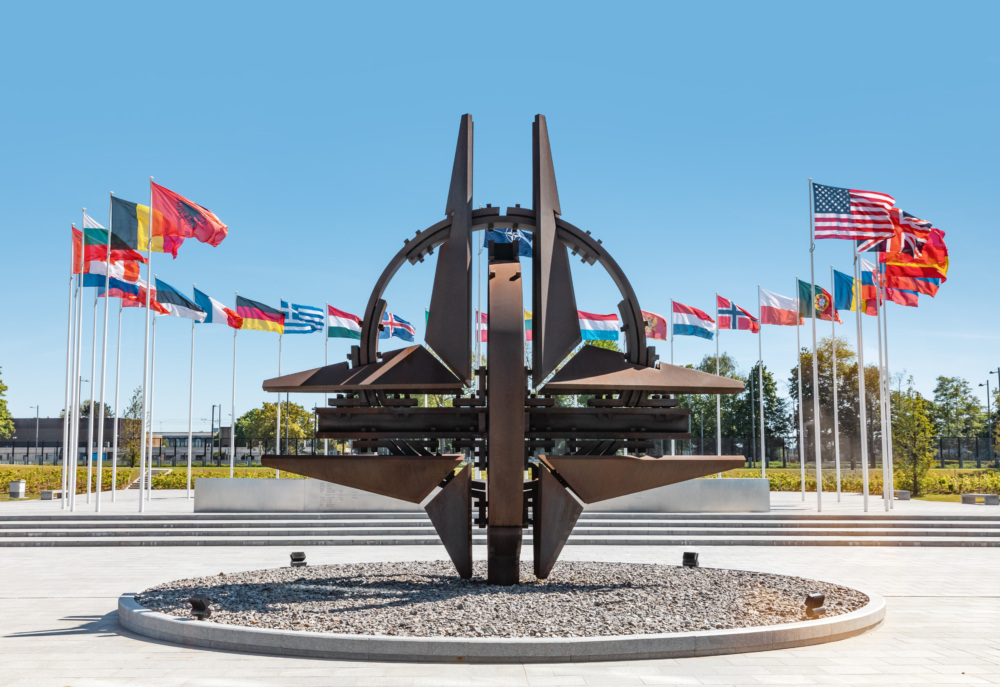
Ellen Swicord
Former Intern, NTI
Atomic Pulse
About the image
Late last month, heads of state and government from the 30 North Atlantic Treaty Organization (NATO) member countries gathered in Madrid, Spain for the 2022 NATO Summit. At the summit, NATO leaders endorsed a new Strategic Concept – the first since 2010. In the context of rising global tensions and the return of war to Europe, the 2022 Strategic Concept aims to affirm the strength and unity of NATO, bolster deterrence, and assert the alliance’s new and enduring objectives.
The updated concept also serves as a grim reminder of the erosion of the arms control, disarmament, and non-proliferation architecture over the past few years, with explicit references to Russia’s nuclear modernization and coercive nuclear signaling, China’s expansion of its nuclear arsenal, and North Korea’s continued development of nuclear and missile systems. In general, the new concept contains notably less language on arms control, disarmament, and non-proliferation than its predecessor, and it includes no mention of arms reductions in Europe.
What is NATO’s Strategic Concept?
NATO’s Strategic Concepts are publicly available documents adopted by consensus that outline the purpose, principles, and core tasks of the alliance. The alliance’s core purpose—to ensure the collective defense of the allies and preserve peace and security on the basis of “democracy, individual liberty, and the rule of law”—has changed little throughout its history. The core tasks set forth in these concepts, however, have fluctuated in accordance with the evolving geopolitical concerns of member states.
What’s new in the 2022 Strategic Concept?
NATO’s eighth Strategic Concept comes amid a new, more insecure geopolitical environment characterized by rising strategic competition, instability, and attacks by authoritarian states on the liberal international rules-based order. In response, the new concept shifts the strategic direction of the alliance, including through:
Following Russia’s invasion of Ukraine, the new Strategic Concept focuses on bolstering deterrence and defense in a number of ways, including by strengthening integrated air and missile defense, forward defense, and the prepositioning of ammunition and equipment. A greater emphasis on building resilience—including in critical infrastructure, supply chains, and health—will serve both to strengthen NATO’s position in Europe and to address a new challenge faced by the alliance: China.
Over the past decade, European countries and the United States have increasingly come to view China as a direct threat to their interests. The 2022 Strategic Concept explicitly calls out malign Chinese activities, including hybrid and cyber operations, disinformation campaigns, and efforts to “control key technological and industrial sectors, critical infrastructure, and strategic materials and supply chains.” The concept further notes the Russia-China strategic partnership as an area of concern, and references in the document to investment by “authoritarian actors” in conventional, nuclear, and missile capabilities are a clear allusion to ongoing military build-up and modernization in both countries.
Finland and Sweden’s formal applications for NATO membership and the first-ever participation of NATO partner states Australia, Japan, New Zealand, and South Korea in the Madrid Summit reflect both the worsening security environment in Europe and the expansion of NATO’s global interests into the Indo-Pacific. The salience of China for the alliance and importance of NATO partnership with countries in the region will likely only grow in the coming years.
What has been preserved from the 2010 Strategic Concept?
Despite significant changes in the global security environment, the 2022 Strategic Concept shows a large degree of continuity with the 2010 document, including a reaffirmation of:
The new concept reaffirms NATO’s status as a nuclear alliance for “as long as nuclear weapons exist.” According to the concept, the nuclear deterrent continues to undergird NATO’s deterrence and defense posture, supplementing its conventional, missile defense, space, and cyber capabilities. Like the 2010 Strategic Concept, the new document notes that the circumstances in which nuclear weapons may be used are “extremely remote.”
Notably, the 2022 Strategic Concept builds on language included in the 2018 NATO Summit Declaration to strengthen the deterrent effect of NATO’s nuclear capability, including the assertion that the separate decision-making centers of nuclear-armed allies France and the United Kingdom generate strategic ambiguity by “complicating the calculations of potential adversaries.” The assertion that forward-deployed U.S. nuclear weapons in Europe and dual capable aircrafts further strengthen the security of the alliance represents a continuation of NATO’s reliance on the deployment of U.S. non-strategic nuclear weapons in Europe as part of its deterrence posture.
Despite strengthened language surrounding the nuclear deterrent and the reassertion of NATO’s nuclear status, the 2022 Strategic Concept also asserts that the allies “seek to create the security environment for a world without nuclear weapons” and upholds the alliance’s commitment to implementation of the NPT. It also highlights allies’ commitment to pursuing strategic risk reduction and continued belief that arms control, disarmament, and non-proliferation “strongly contribute” to NATO’s objectives and security. This language echoes that of previous Strategic Concepts and provides a positive counterpoint to Russia’s nuclear saber-rattling over the past months.
What implications does the new Strategic Concept have for arms control, disarmament, and non-proliferation?
Though the new concept asserts the continued importance of arms control, disarmament, and nonproliferation, it provides little clarity on how exactly NATO will engage in strategic risk reduction on these issues within today’s tense environment. The allies assert their continued willingness to maintain open channels of communication with Russia to reduce risks, prevent escalation, and build transparency. However, the assertion that “any change in our relationship depends on the Russian Federation halting its aggressive behaviour and fully complying with international law” makes clear that NATO believes the ball is in Russia’s court to reestablish a foundation for further progress on arms control.
Sign up for our newsletter to get the latest on nuclear and biological threats.
